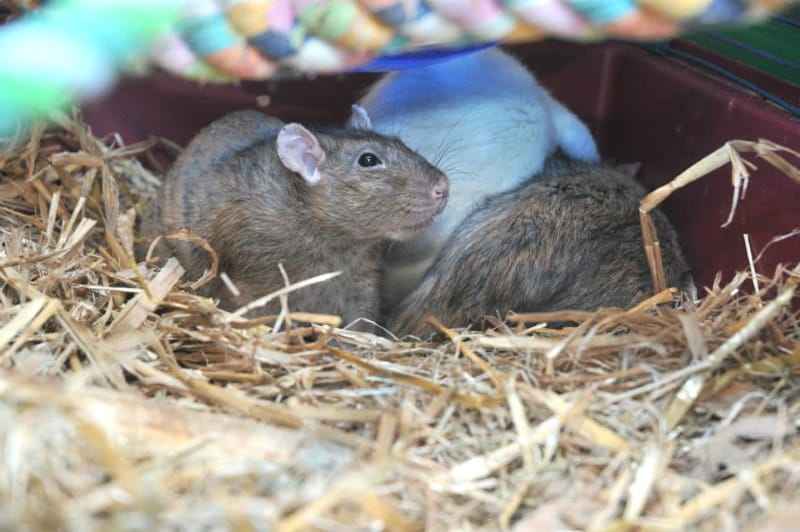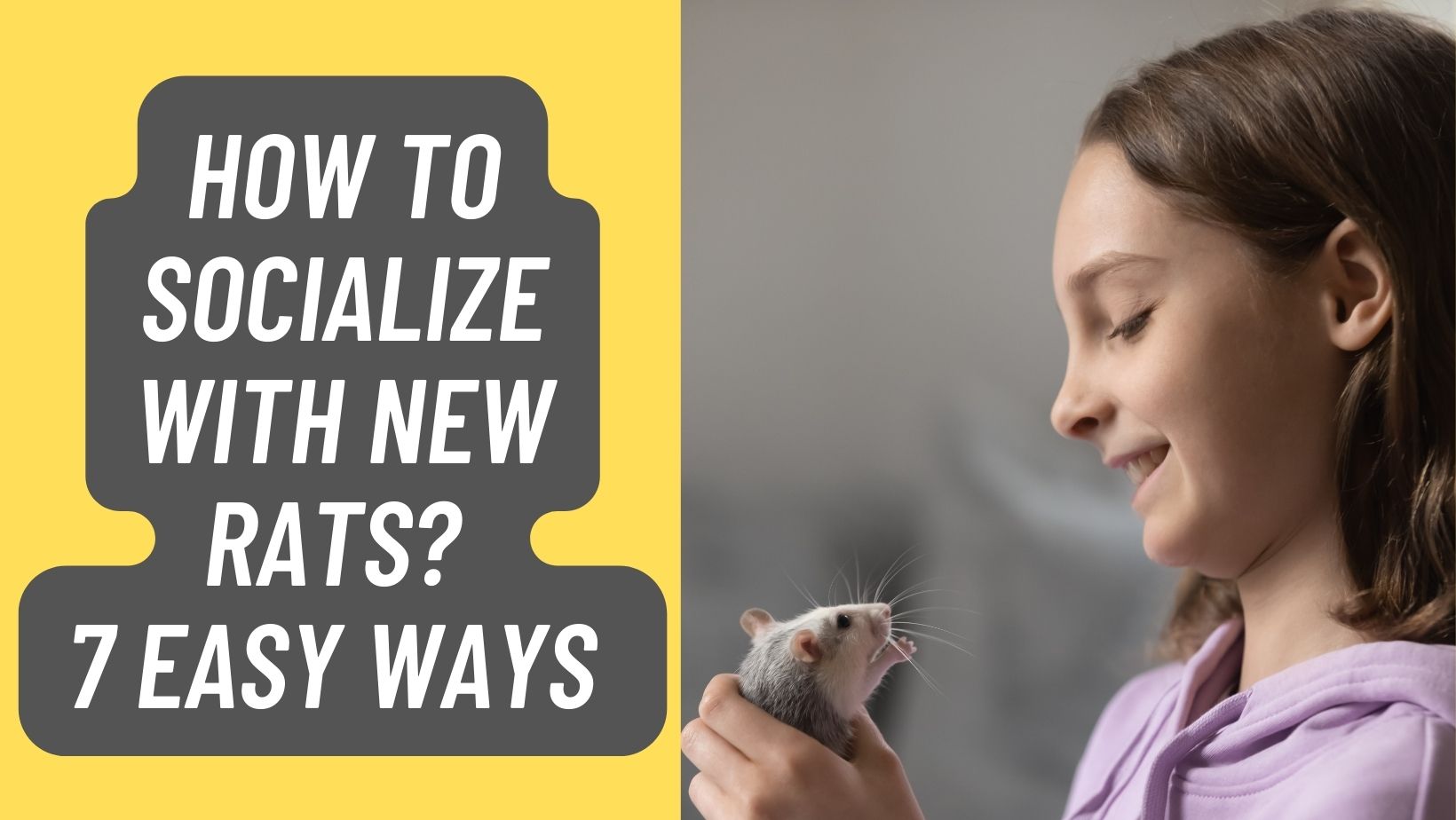The term socialization means to get your rat (or any pet) accustomed to you so that they are not prone to bite or be afraid when you are near. Some rats will be used to you after a few minutes and have no trouble warming up to you at all.
However, there are other rats that will be fearful and shy (much like my rat Splinter, initially). The shy, fearful ones are the ones that will take some work.
Socializing New Rats
There are two types of methods to socialize a rat. The first one you should try is gradual socialization. This is a little time every day (I recommend a half-hour to an hour) to spend with your rats, making baby steps to building your relationship.
Here are some steps you may want to try. You can start at whatever stage your rat is at.
ALSO READ: Promoting Good Behaviour in Rats
Not all rats will run away from you but they may not let you pet them either.
Buy a jar of baby food (sweet potato is usually a favorite).
Take a small spoonful of it and offer it to your rat. This will get your rat used to just being near you.
The goal of this exercise is to get your rat used to your presence so that it doesn’t flee to the nearest hiding spot when you walk by.
Once you’ve achieved being able to be near your rat without him running away, start offering some dry food such as fresh veggies and fruits.
Offer small cut pieces so that your rattie will keep coming back for more.
This will help them get used to taking stuff from you. This can also be done during feeding time. Instead of putting in a handful of lab blocks into the cage, offer it to your rat one by one.
This can also be the time you can teach your rat to come when called.

Once you can successfully hand your rat food, he should be pretty used to you then.
He may still flinch if you reach to touch him but he’ll take food if you have it. If your rat still cowers away when you try and touch it, just lay your hand flat in the cage.
Let them explore you and if he dares, climb onto your hand. Perhaps every time he touches your hand, you can give him a treat. This is positive reinforcement saying “Hey, I like it when you do that. Here, have your reward”.
This process is done over time. You really can’t rush trust training but the good news is, most rats will let you buy their love with food. However, if after a couple of weeks, you are still unable to get your rat used to you, you may want to try forced socialization.
This will still take time. With Splinter, it took me 3 weeks to get him really used to me but my method worked. Here are some guidelines to follow if you decide to try this method:
I recommend doing this on a couch and not a chair.
If your rat gets scared or jumps around too much, you don’t want to risk him getting hurt. A couch allows him to run away a little bit instead of being forced to stay on you.
Pick up your rat and sit down with him in your lap.
With Splinter, this was a challenge as he would not take food or let me pick him up. I just had to keep trying until I got a firm hold on him.
While the rat is on your lap, note what time it is and set a time he must sit on your lap for him to earn a treat. If he is able to reach that time limit, give him the treat.
If he refuses to take it from you, still put the treat in front of his nose.
Five-minute breaks are recommended in between each time period.
This gives your rat time to de-stress and process what just happened. The key to training a rat is repetition.
After five minutes, redo the process again. Every few times, expand your time limit but keep consistently rewarding him even if he does not take the treat.
It is believed that rats can only be scared of you for 20 minutes before they are not scared anymore. This does not mean that you should hold your rat for 20 minutes and all will be done.
They’ll still try to run away from you.
Relationships take time to build and as I always say, the relationship between you and your rat is depending on how much time you’re willing to put in to spending with your rat.
Remember, positive reinforcement and consistency is the key to training and socializing. You should never abuse your rat in anyway to achieve your goal.




